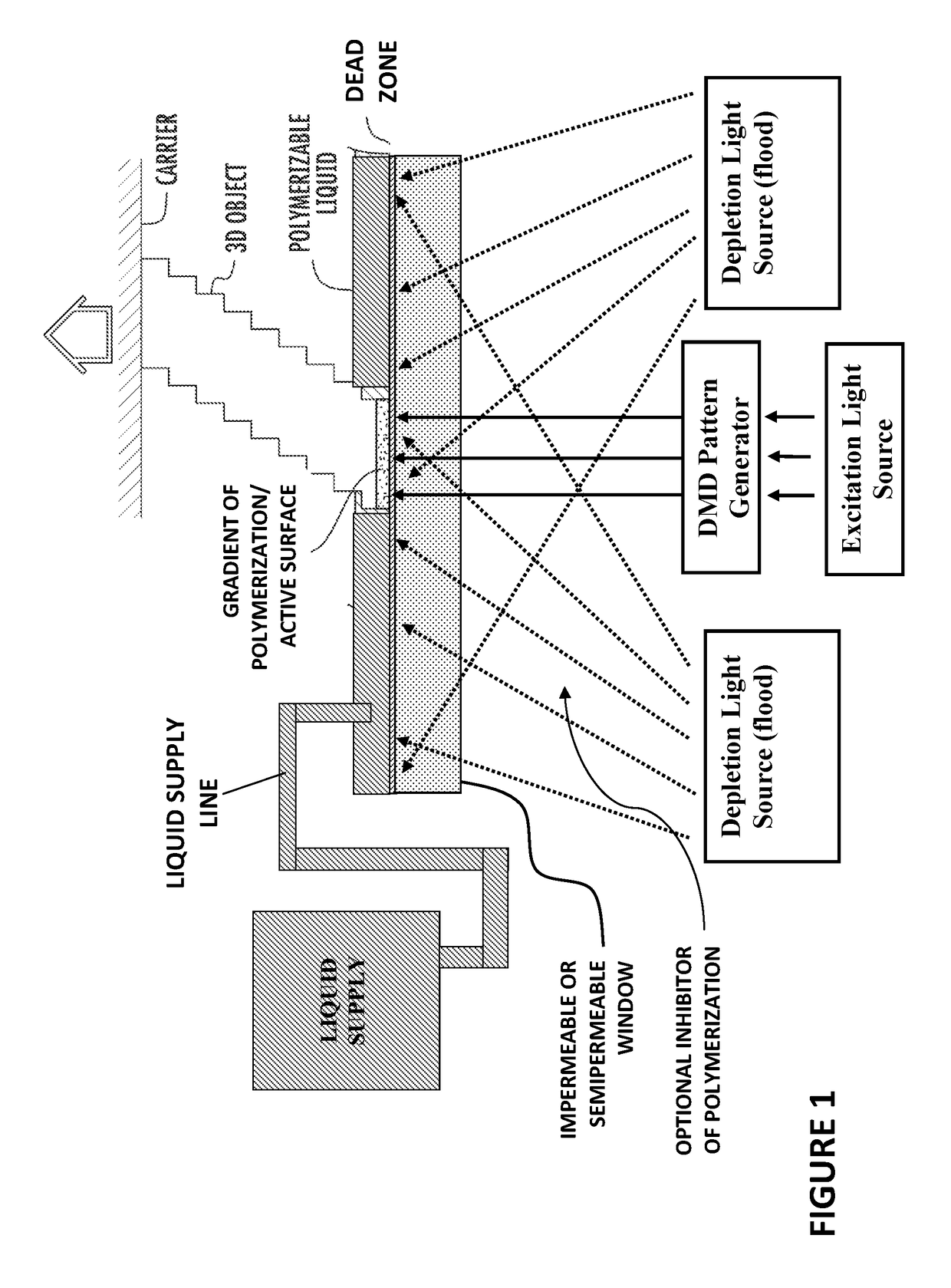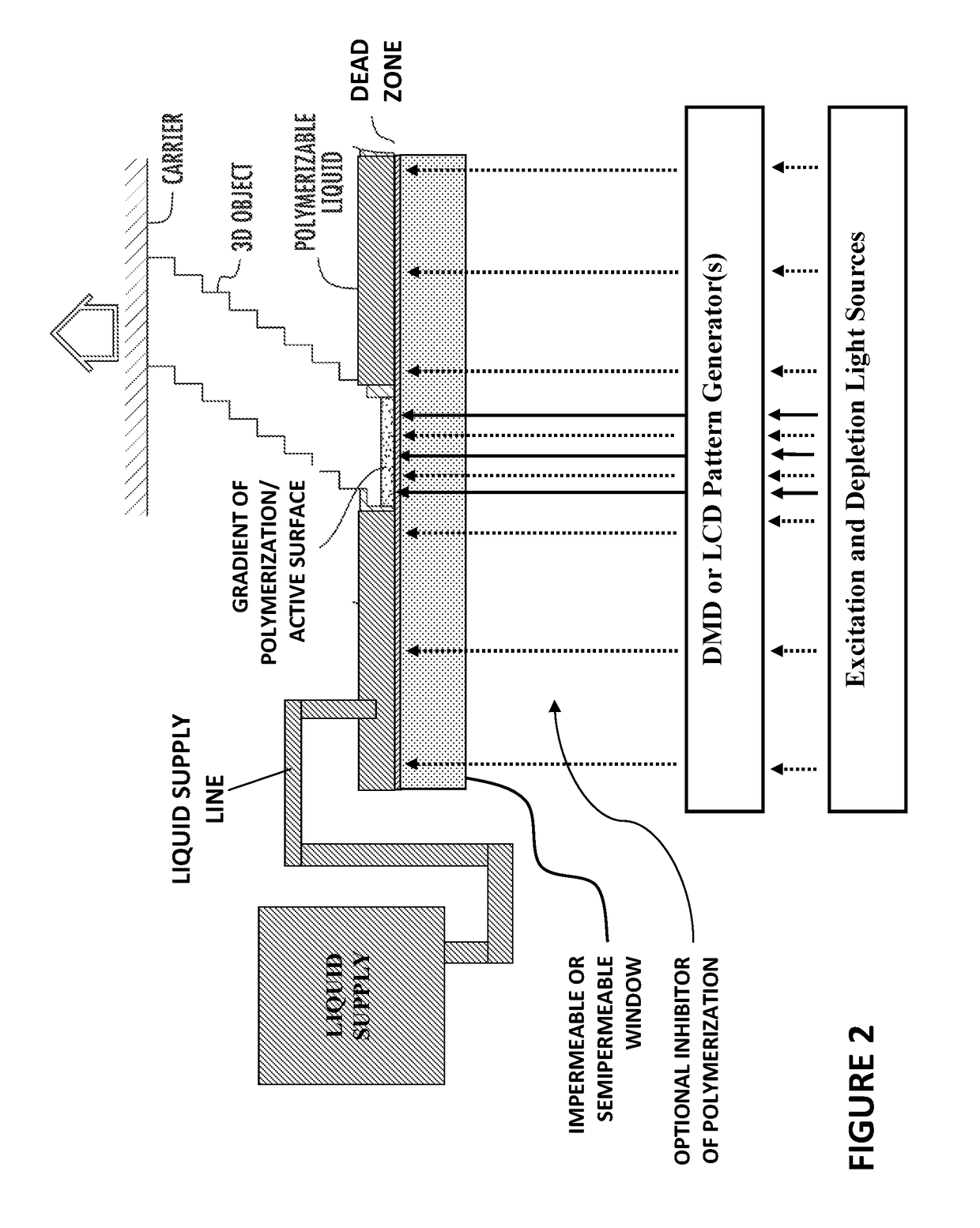Method and Apparatus for Producing Three- Dimensional Objects
a three-dimensional object and apparatus technology, applied in metal-working apparatuses, additive manufacturing, manufacturing tools, etc., can solve the problems of needing to submerge, use of additional mechanical elements, extreme care, etc., and achieve the effect of inhibiting the polymerization of the polymerizable liquid
- Summary
- Abstract
- Description
- Claims
- Application Information
AI Technical Summary
Benefits of technology
Problems solved by technology
Method used
Image
Examples
example
[0095]An example of aspects of the present invention is carried out by coating a glass window with a resin mixture of 10 grams of trimethylolpropane trimethacrylate (TMPTMA), 200 milligrams of camphorquinone, 200 milligrams of ethyl 4-(dimethylamino)benzoate (EDB), 100 milligrams of butyl nitrite, and 0 to 25 milligrams of BLS-1326, a benzotriazole ultraviolet light absorber (available from Mayzo, 3935 Lakefield Court, Suwanee, Ga., USA 30024).
[0096]The TMPTMA is the UV crosslinkable component. The camphorquinone and EDB are the initiator and amine co-initiator. Butyl nitrite is the photoinhibitor, and BLS-1326 is added to change the penetration depth of the inhibitor wavelength (approximately 10 milligrams can be used). Once the mixture is applied to the window, the window is flood exposed with light at an inhibition wavelength, and simultaneously exposed with light (e.g., patterned light) at the polymerization wavelength through any suitable light engine. The polymerization wavele...
PUM
| Property | Measurement | Unit |
|---|---|---|
| Transparency | aaaaa | aaaaa |
| Wavelength | aaaaa | aaaaa |
Abstract
Description
Claims
Application Information
 Login to View More
Login to View More - R&D
- Intellectual Property
- Life Sciences
- Materials
- Tech Scout
- Unparalleled Data Quality
- Higher Quality Content
- 60% Fewer Hallucinations
Browse by: Latest US Patents, China's latest patents, Technical Efficacy Thesaurus, Application Domain, Technology Topic, Popular Technical Reports.
© 2025 PatSnap. All rights reserved.Legal|Privacy policy|Modern Slavery Act Transparency Statement|Sitemap|About US| Contact US: help@patsnap.com



